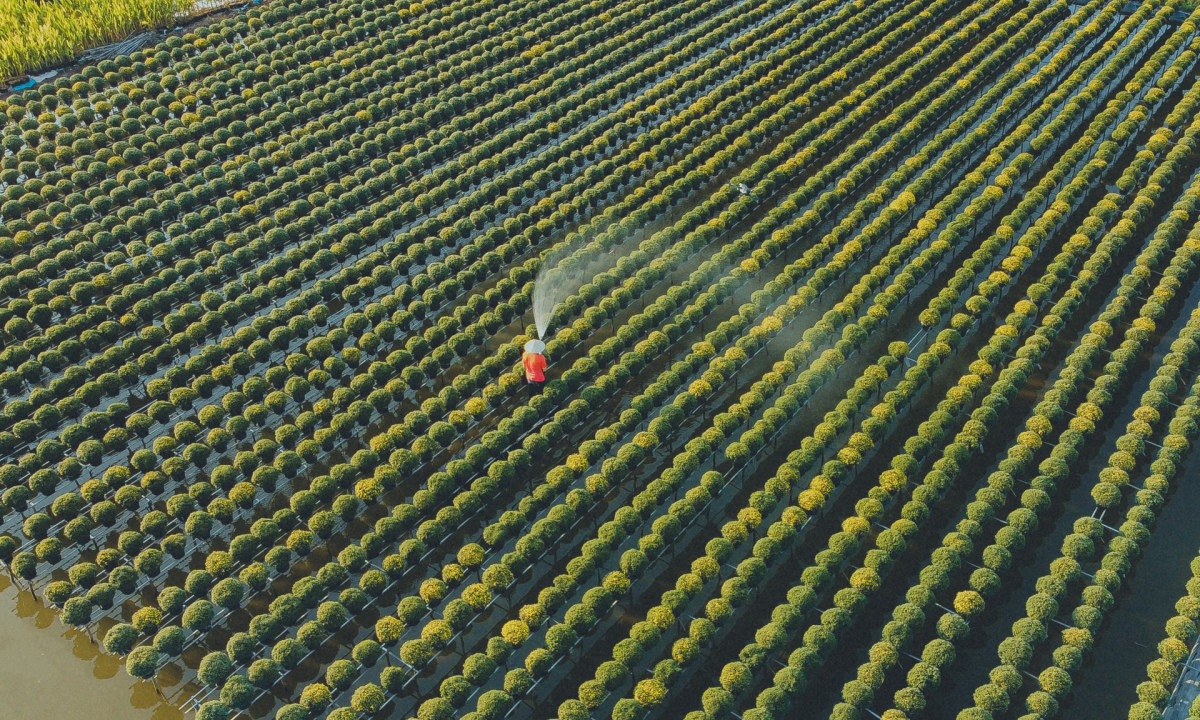
Sa Dec flower village is located about 3 km from Sa Dec city, Dong Thap province, is the largest flower village in the West with 4,000 households producing ornamental flowers and more than 2,000 types of flowers. The hundred-year-old flower village impresses with the image of flower beds that "do not touch the ground". During the flood season, people use boats to row between the flower beds to take care of the flowers, bringing a typical image of the river delta in the West.
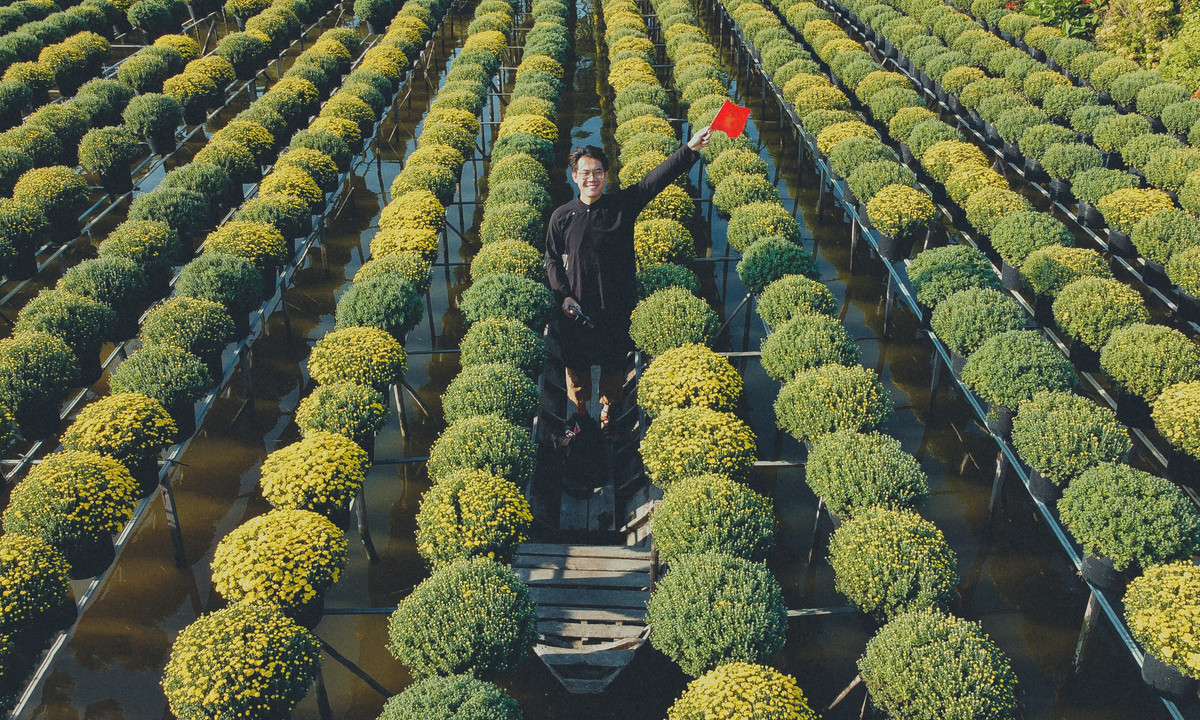
In the days before Tet, tourists flock to Sa Dec flower village to take photos with baskets of blooming yellow chrysanthemums. On January 11, Khanh Tuan (Vung Tau) had a spring trip to the West before Tet, from Sa Dec flower village to Mang Thit ceramic village, Vinh Long .
This year, flower farmers "wait" for the flowers to bloom late so that tourists can still see the flowers close to Tet.
In mid-January, the chrysanthemum fields are mostly green buds, with a few clusters of yellow flowers. The week before Tet is the best time for tourists to visit the flower village, sightsee, take pictures and buy flowers. Each pot of chrysanthemum here is sold for less than 100,000 VND, cheaper than buying at the markets in the city center, Tuan said.
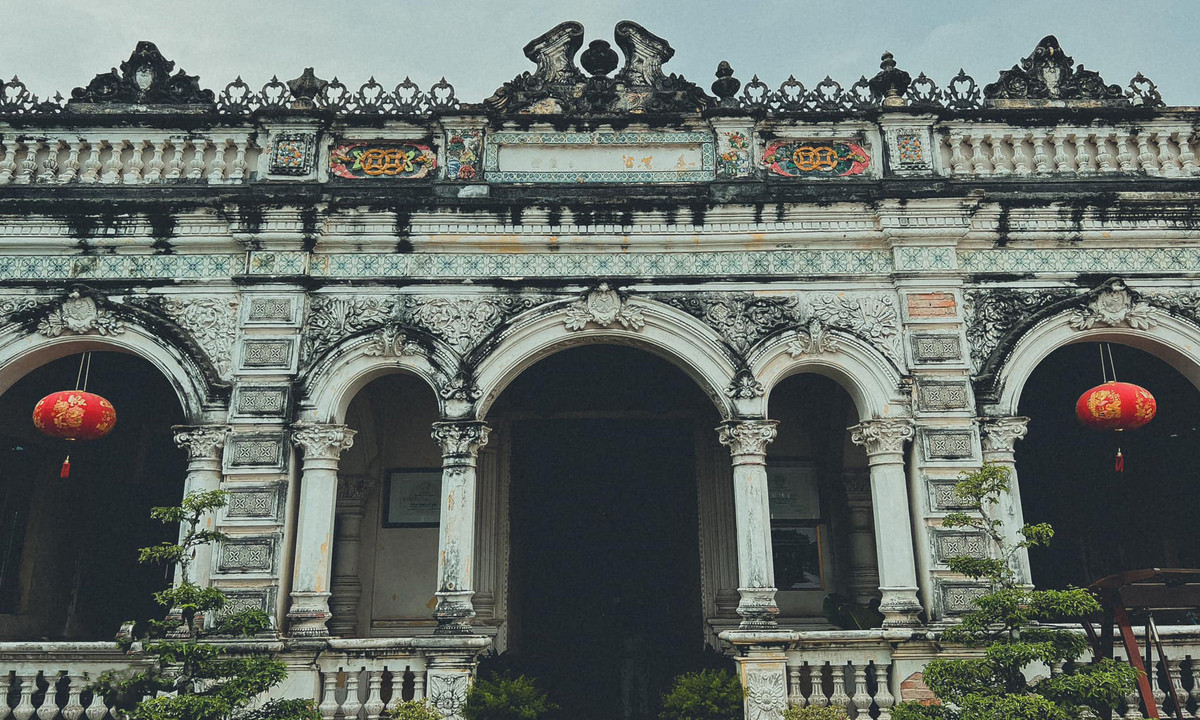
Leaving the flower village, Tuan visited the ancient house of Huynh Thuy Le, built by Chinese merchant Huynh Cam Thuan (Mr. Le's father) in 1895 in Sa Dec city, Dong Thap province.
Mr. Huynh Thuy Le is a character in the novel The Lover, written by French writer Marguerite Duras based on her true love story with Mr. Le. Their budding love on the Vinh Long - Sa Dec ferry did not come to fruition due to family opposition. Mr. Huynh Thuy Le married a fellow countryman as arranged by his parents, while Mrs. Duras returned to France.
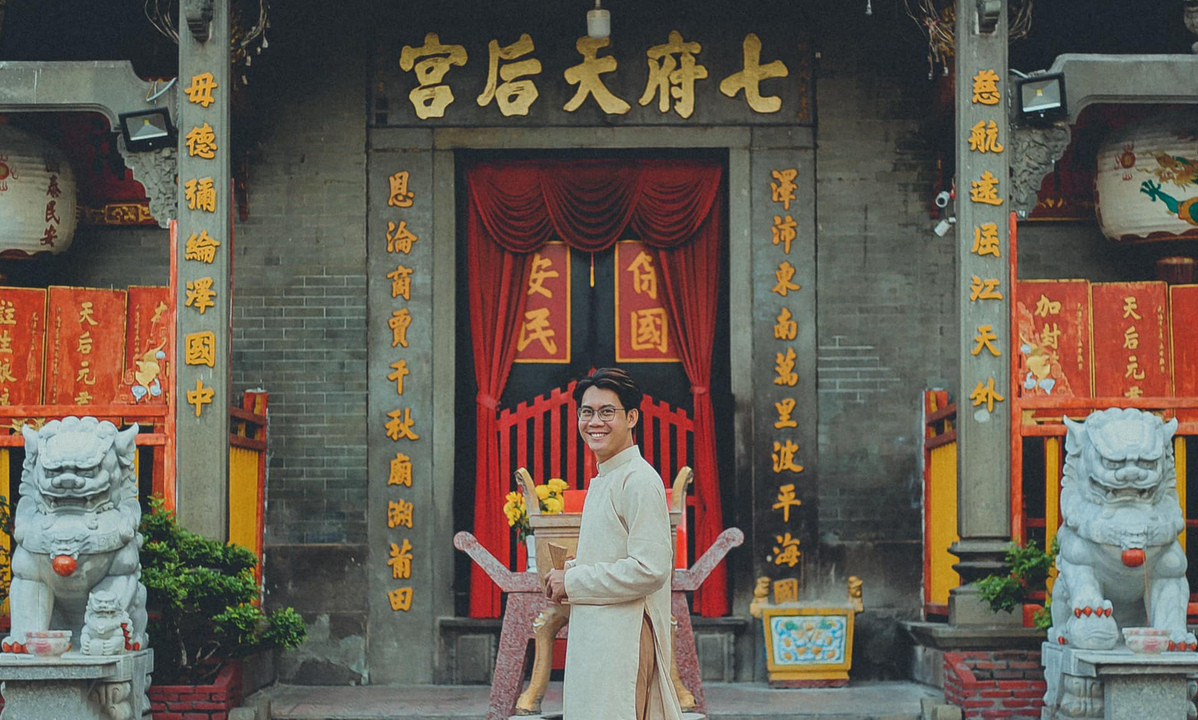
In Sa Dec city, besides Huynh Thuy Le ancient house, Thien Hau pagoda - full name is That Phu Thien Hau Cung - also known as Thien Hau Temple is also the address Tuan visited.
Located at 143 Tran Hung Dao Street, Ward 1, Sa Dec City, the pagoda has a unique Chinese-style architecture with the main colors of red and yellow, standing out against the blue sky, Tuan said.
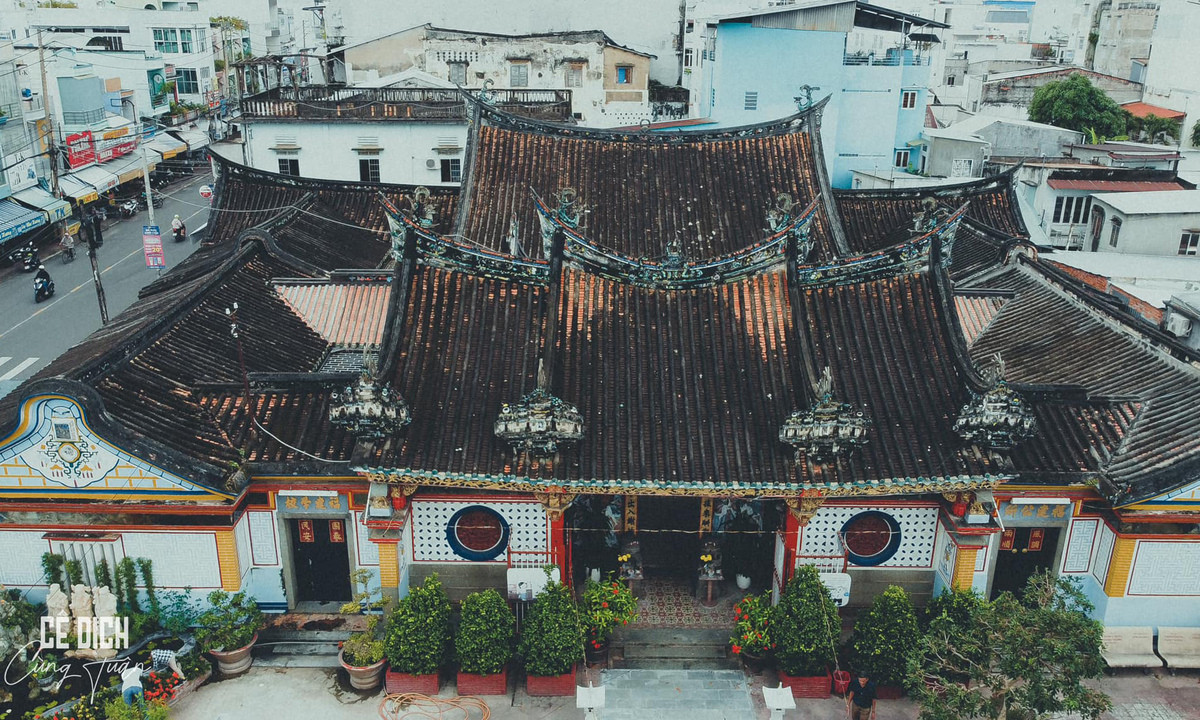
Kien An Cung, also known as Ong Quach Pagoda, located in the center of Sa Dec City, was recognized by the Ministry of Culture and Information as a national historical and cultural relic on April 27, 1990.
The temple was built by Chinese people from Fujian province from 1924 to 1927 in Chinese architectural style: 3-layer tiled roof, roofed in dragon waves. The temple is both majestic and splendid with brilliant colors, solemn worship rooms, and ancient with brick walls and tiled roofs stained by time. On the walls of the temple are images from ancient stories and legends such as Journey to the West, Romance of the Three Kingdoms, watercolor paintings with profound hidden meanings.
The pagoda is located near tourist attractions in Sa Dec city such as flower village, Huynh Thuy Le ancient house, and Thien Hau pagoda, convenient for tourists to visit during the day.
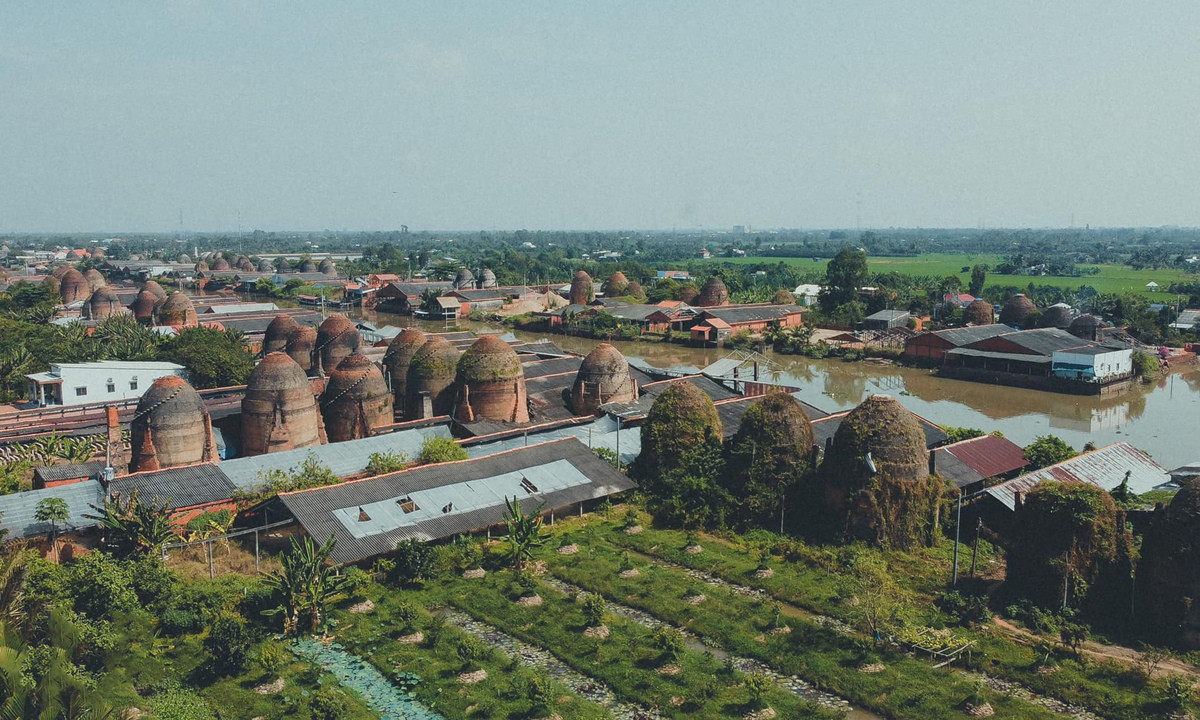
Walking along the Co Chien River, Tuan saw "giant mushrooms" gradually appearing. These were actually red brick kilns, higher than the roofs, in Mang Thit District, Vinh Long Province. This place is also known as the "kingdom of bricks and ceramics" that has existed for hundreds of years, and is the largest producer of red bricks and ceramics in the Southwest region, exporting to many countries around the world.
Each dome-shaped kiln roof stands out on the river in the West, creating a unique, ancient beauty and arousing curiosity for distant visitors like Tuan.
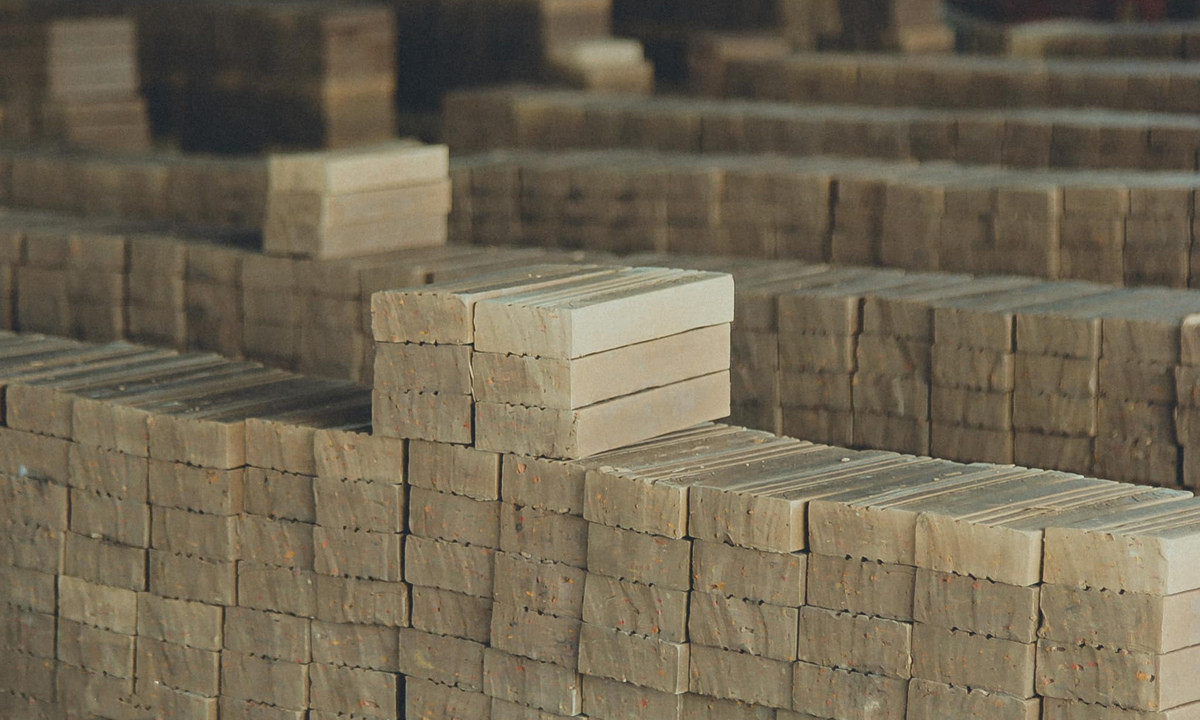
For about 4 years now, the brick and pottery industry has begun to stagnate due to high production costs and low selling prices. From a traditional craft village, the brick and pottery kilns in Mang Thit have now become an attractive tourist destination for domestic and foreign visitors.
Coming here, Mr. Tuan witnessed the steps to make bricks, tiles, and ship bricks using traditional manual methods. People use machines to shape clay into bricks, dry them in the sun until they harden, and then place them in the kiln.
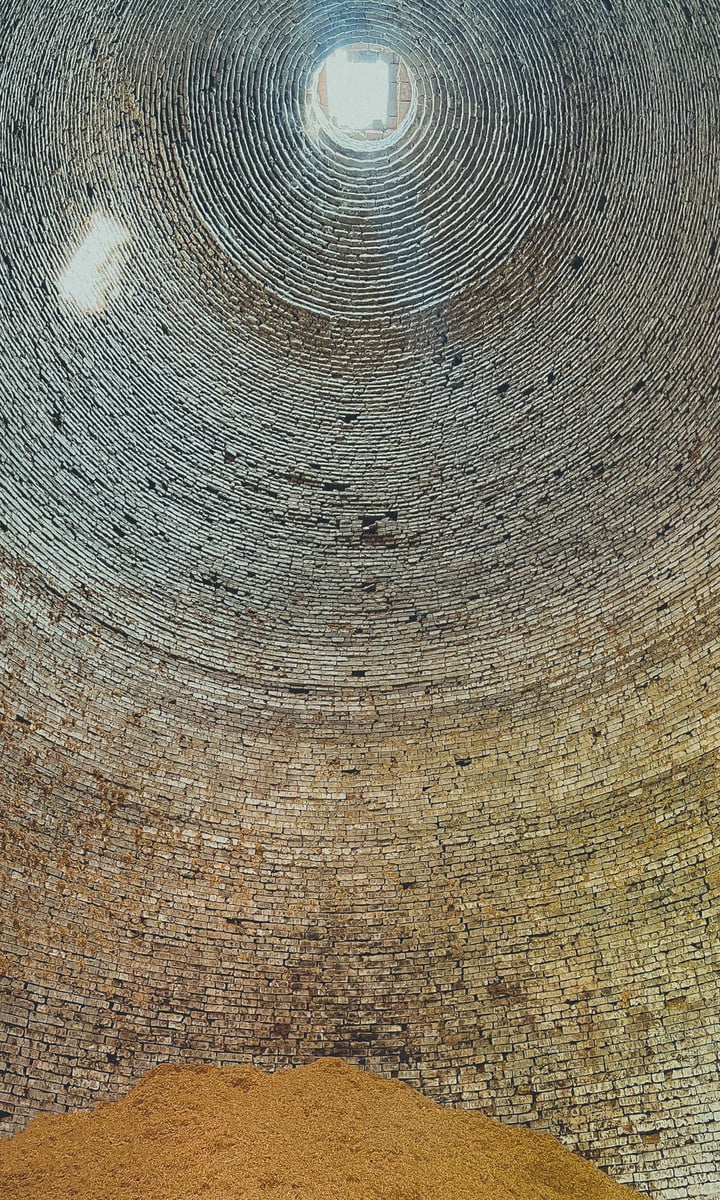
Brick kilns in the Southwest are traditional circular kilns with dome-shaped roofs, about 6-8 m in diameter and about 9-13.5 m in height. Rice husks are stored in the kilns to burn bricks.
At noon, strong rays of sunlight shine through the chimney hole on the roof of the furnace, illuminating the space inside for visitors to observe and take photos.
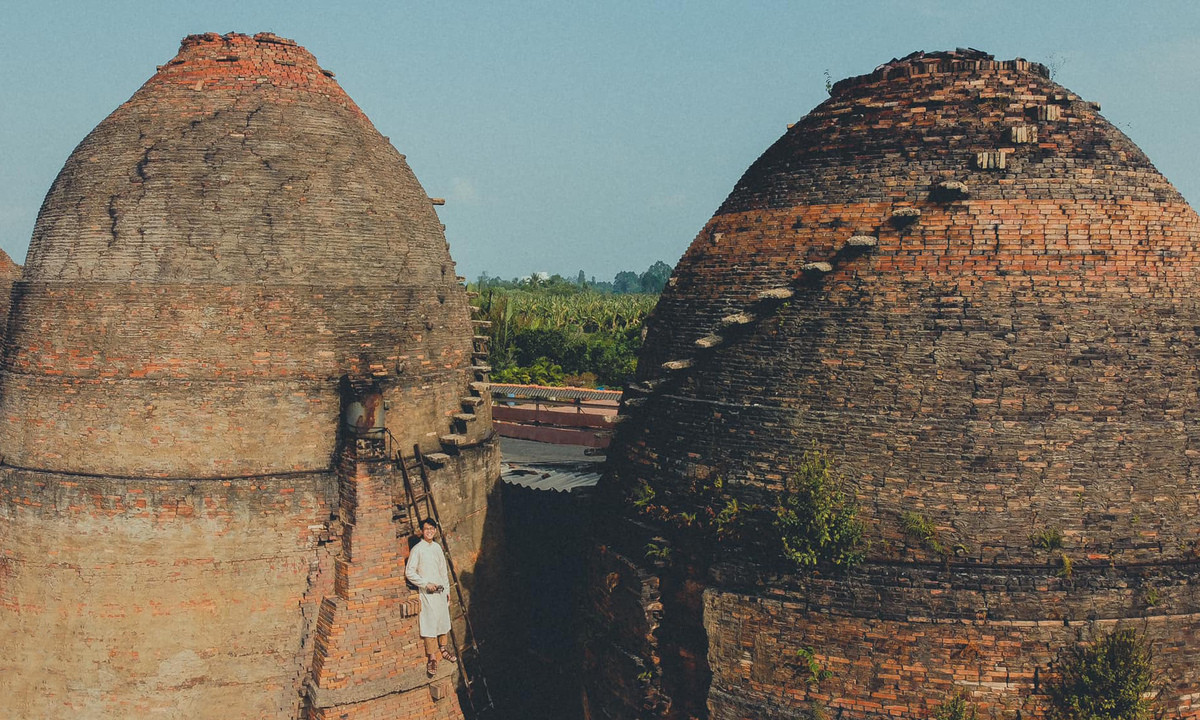
Outside the wall, vines, green moss, and wild grass obscure the red-brown color of the baked bricks, becoming a unique backdrop for artistic photos. The unique, time-stained beauty of the brick kilns attracts a large number of tourists to check in and take photos.
TB (according to VnExpress)Source


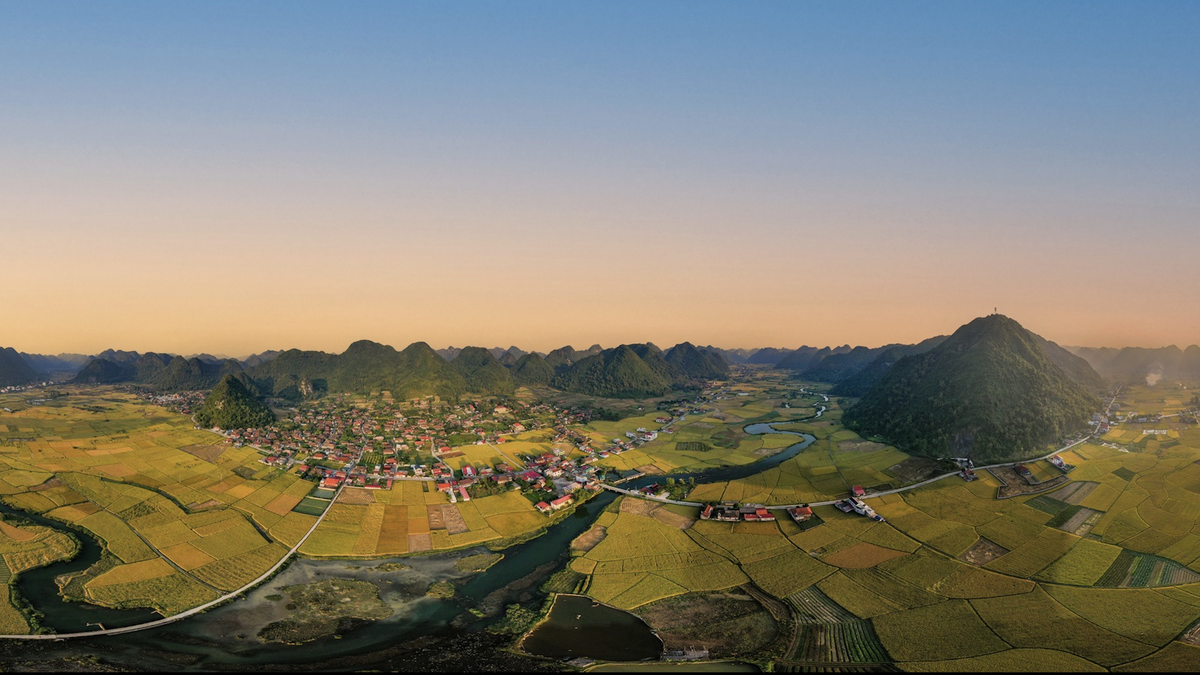

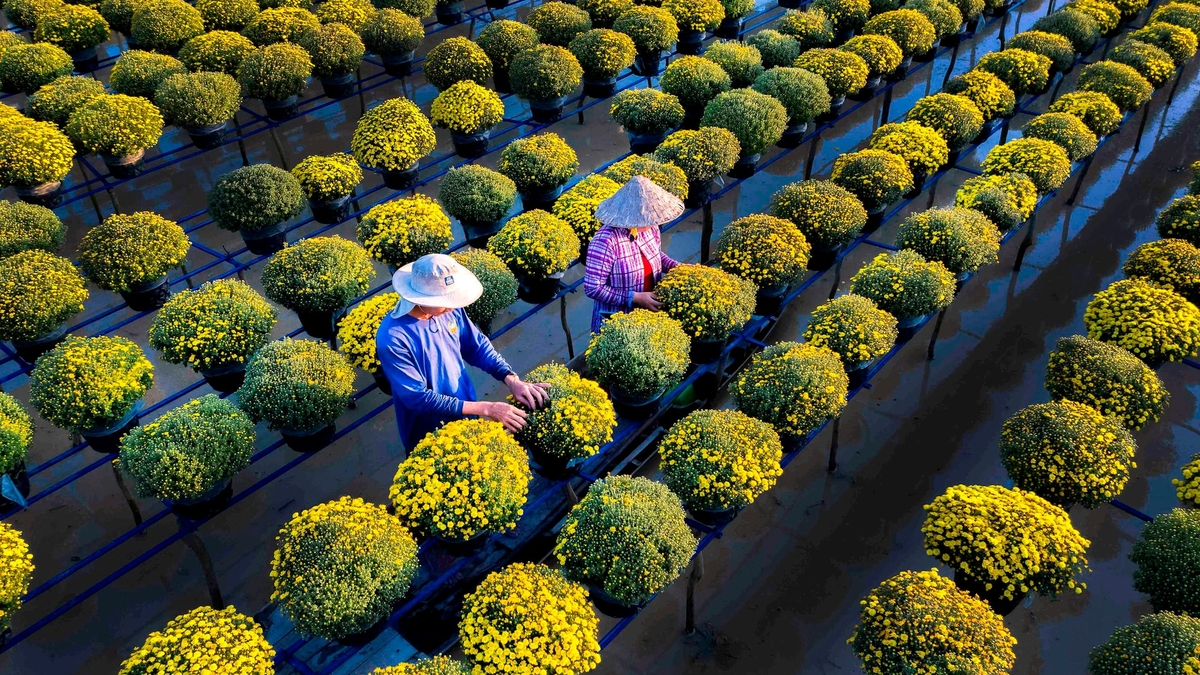
![[Photo] Enjoy the Liuyang Fireworks Festival in Hunan, China](https://vphoto.vietnam.vn/thumb/1200x675/vietnam/resource/IMAGE/2025/10/26/1761463428882_ndo_br_02-1-my-1-jpg.webp)
![[Photo] General Secretary To Lam received the delegation attending the international conference on Vietnam studies](https://vphoto.vietnam.vn/thumb/1200x675/vietnam/resource/IMAGE/2025/10/26/1761456527874_a1-bnd-5260-7947-jpg.webp)
![[Photo] Nhan Dan Newspaper displays and solicits comments on the Draft Documents of the 14th National Party Congress](https://vphoto.vietnam.vn/thumb/1200x675/vietnam/resource/IMAGE/2025/10/26/1761470328996_ndo_br_bao-long-171-8916-jpg.webp)
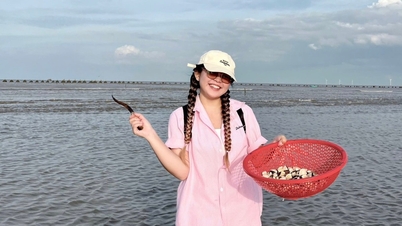
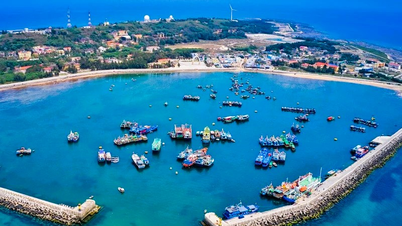


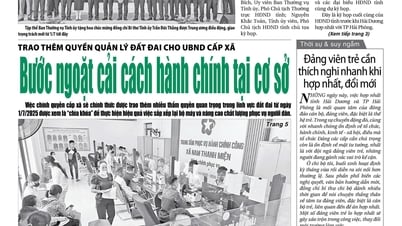

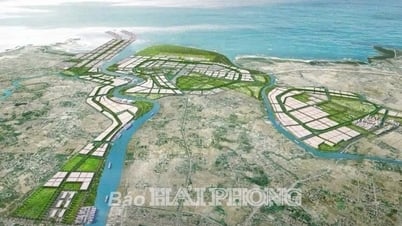
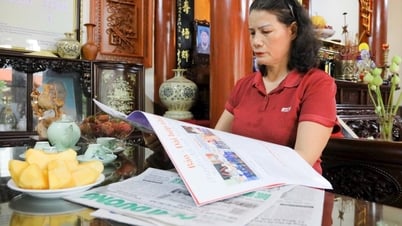






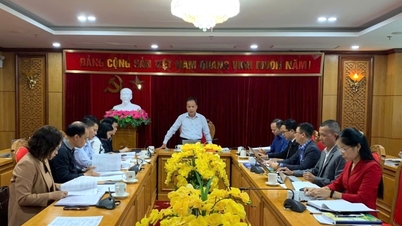


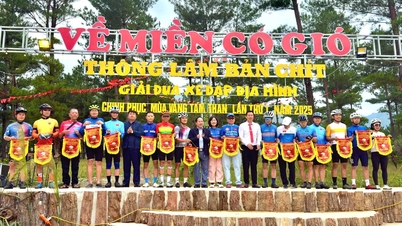
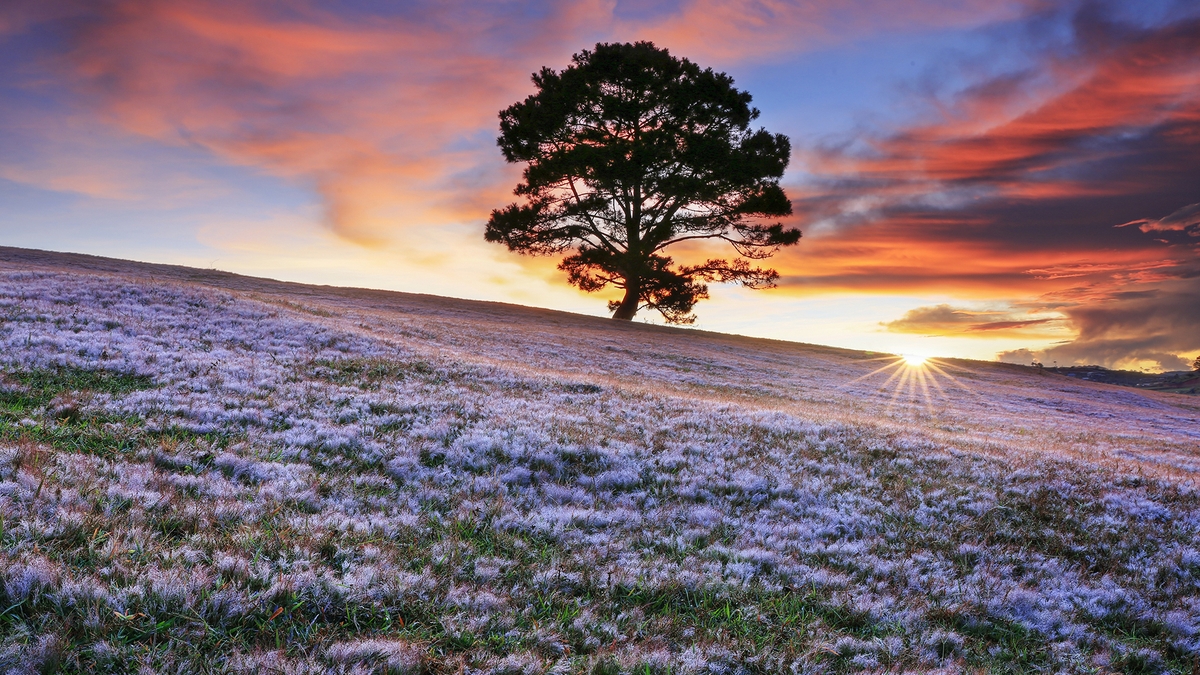
![[Photo] Prime Minister Pham Minh Chinh attends the opening of the 47th ASEAN Summit](https://vphoto.vietnam.vn/thumb/1200x675/vietnam/resource/IMAGE/2025/10/26/1761452925332_c2a-jpg.webp)




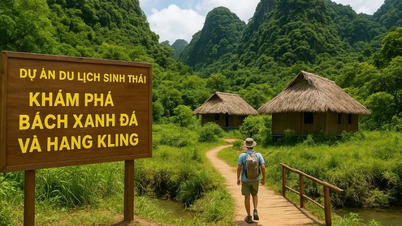













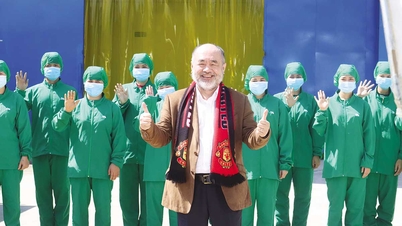





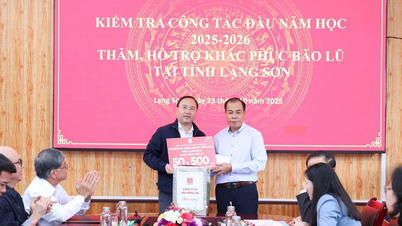




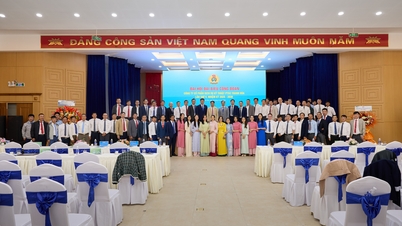


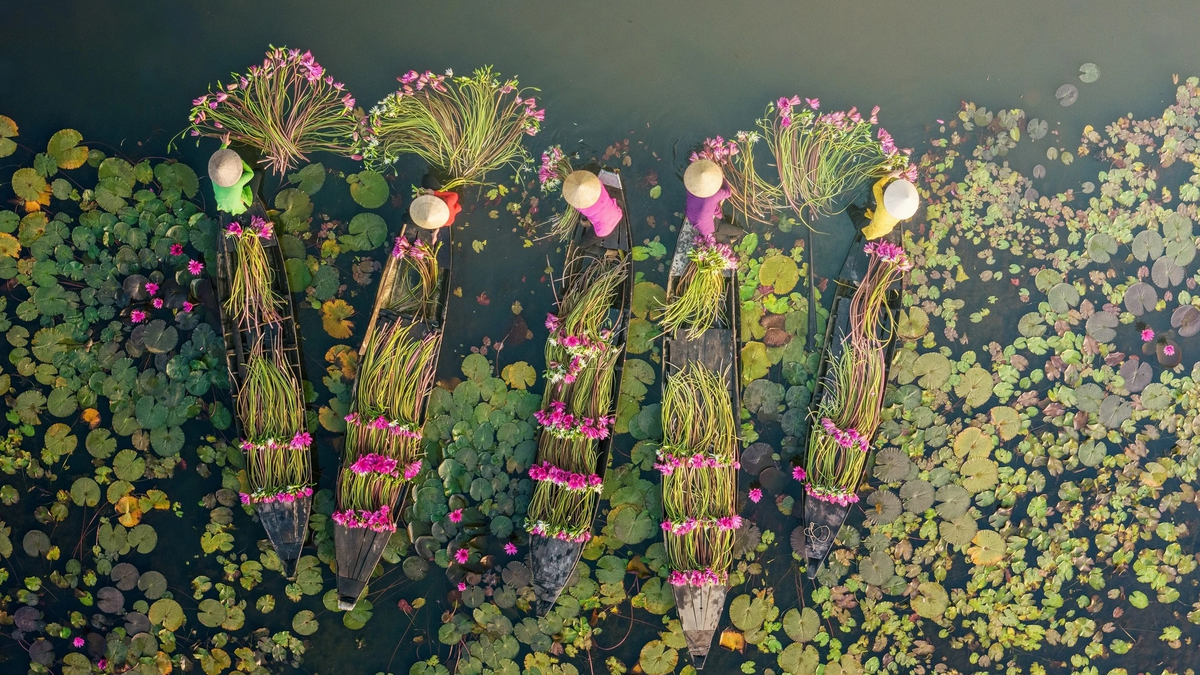

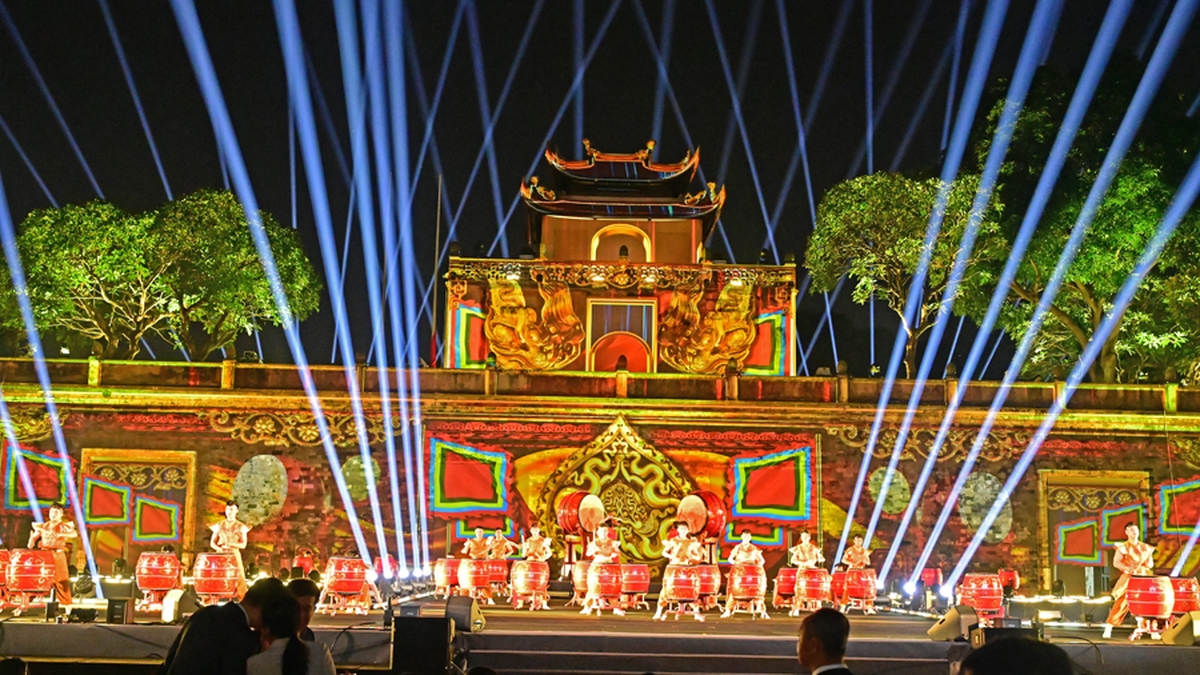
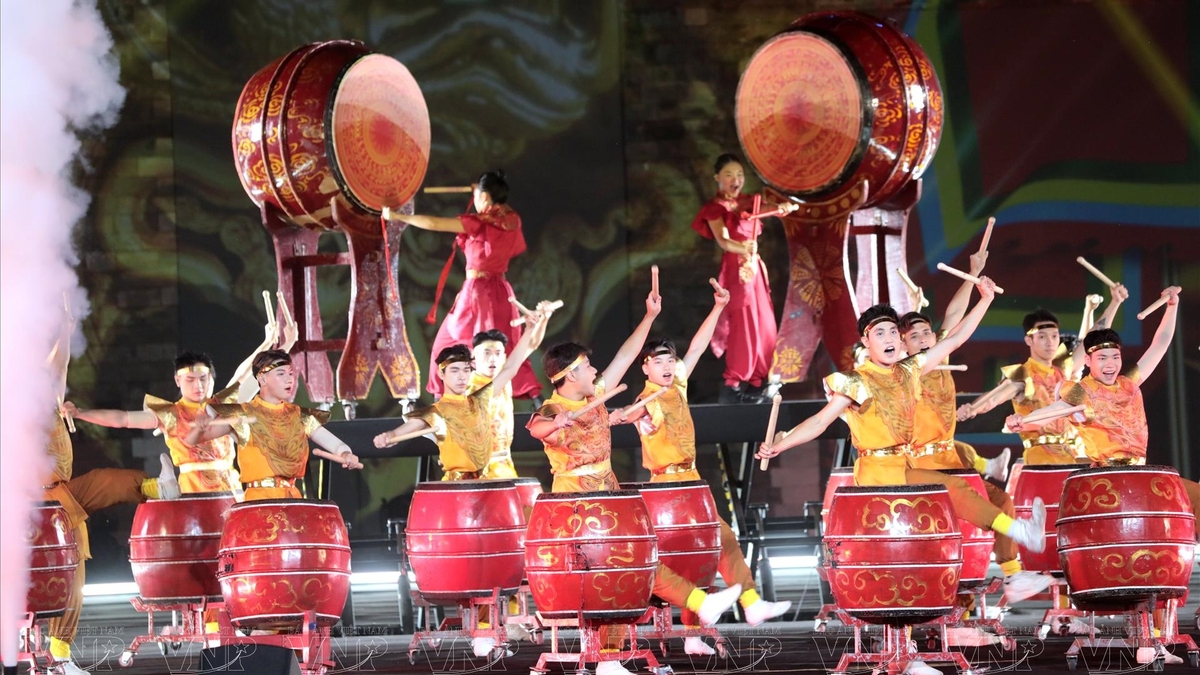
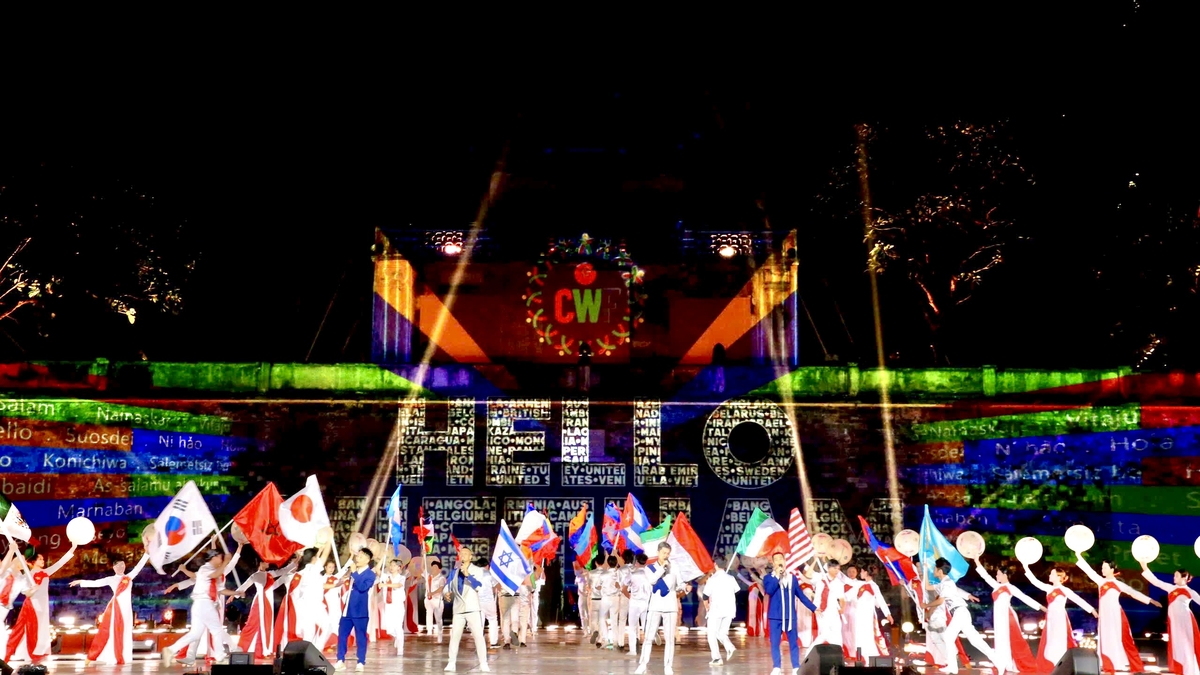


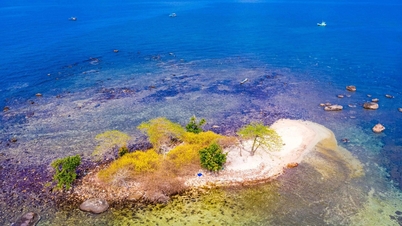





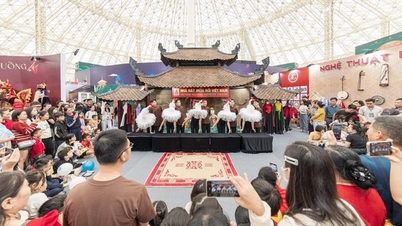




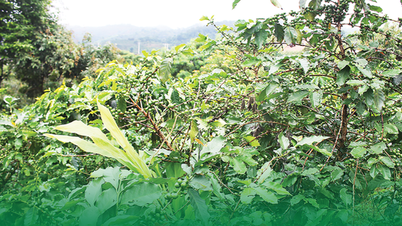
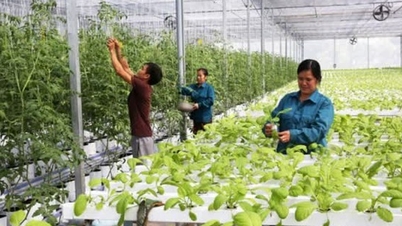

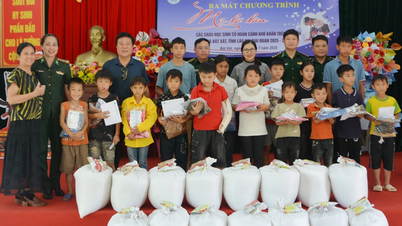







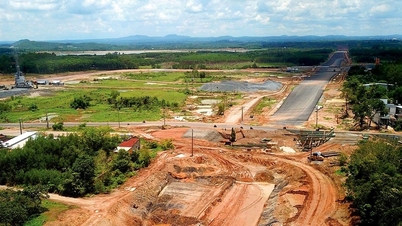
















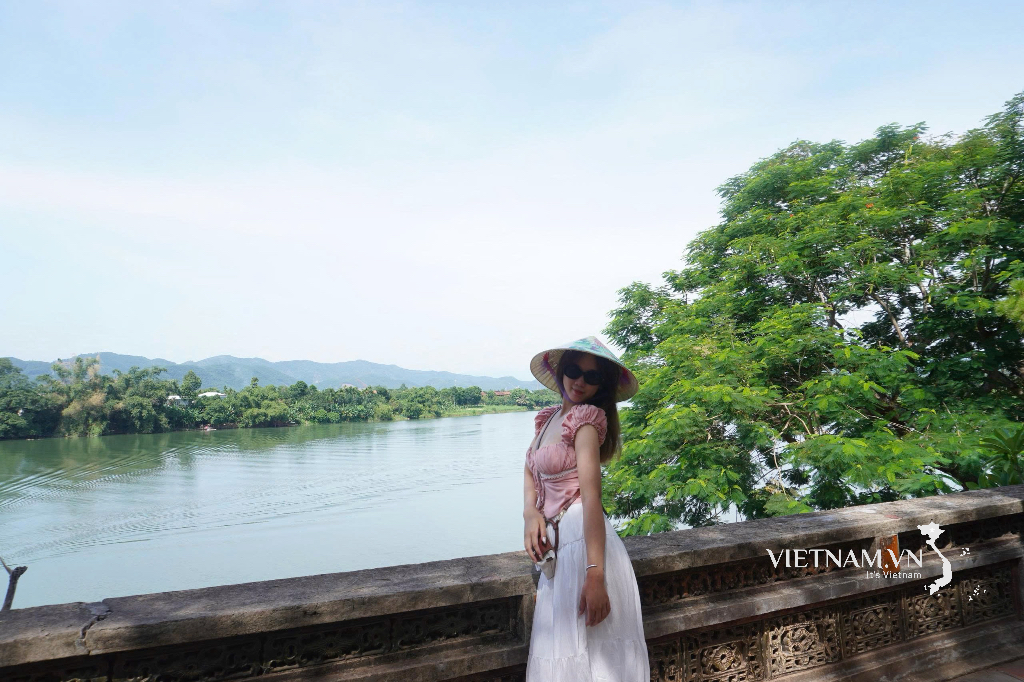
Comment (0)